Do you have a question about the Brother MFC-L2712DW and is the answer not in the manual?
Provides a comparative table of model specifications.
Details network interface types and configurations for different models.
Outlines machine life, part life, MTBF, MTTR, and maintenance parts.
Lists toner cartridge and drum unit specifications, including yield and shelf life.
Specifies media types, input capacities, weights, and sizes for ADF.
Details modem speed, transmission speed, ITU-T group, and fax types.
Provides copy speed and first copy out time specifications for various models.
Lists scanner resolution, scanning speed, and duplex scanning capabilities.
Introduces troubleshooting and lists essential precautions and pre-checks.
Details machine components, paper paths, and part operations.
Lists machine error codes, their descriptions, and references for quick resolution.
Provides systematic troubleshooting steps for various problem categories.
Crucial safety guidelines to follow before and during disassembly/reassembly.
Covers packing, screw details, lubrication, gears, harness routing, and disassembly flow.
Details step-by-step instructions for disassembling various machine parts and units.
Outlines procedures for installing firmware, initializing EEPROM, and setting values after replacing the main PCB.
Covers the procedure for resetting the irregular power supply detection counter.
Guides on entering the adjusted value of the laser unit after replacement.
Covers adjusting the touch panel and checking LCD operation.
Outlines acquiring white level data and performing scanning checks.
Introduces function codes for maintenance and service operations.
Provides methods for entering maintenance mode for service personnel.
Lists all available maintenance mode functions with their corresponding codes and references.
Explains EEPROM initialization for service and user support.
Guides on setting and printing worker switch configurations.
Explains how to check the status of various machine sensors.
Covers checking toner cartridge compatibility and data.
Details the procedure for adjusting the touch panel.
Lists additional service functions available for maintenance.
Explains the procedure for cleaning the drum unit.
Details how to reset the drum counter after replacement.
Explains the meaning of warning symbols and notes used throughout the manual.
Provides essential safety instructions and warnings for operating the machine.
Provides cautions regarding the laser unit and avoiding direct exposure.
Includes regulatory notices specific to telephone connections and FCC compliance.
Provides a comprehensive electrical wiring diagram of the machine's components.
States that there are no parts that require periodic replacement.
Explains how to locate and interpret the printer's serial number label.
Details the steps to reset machine settings to factory defaults.
Provides instructions for installing the maintenance driver on Windows systems.
| Duplex printing | Yes |
|---|---|
| Print technology | Laser |
| Maximum resolution | 1200 x 1200 DPI |
| Duplex printing mode | Auto |
| Time to first page (black, normal) | 8.5 s |
| Print speed (black, normal quality, A4/US Letter) | 30 ppm |
| Duplex print speed (black, normal quality, A4/US Letter) | 15 ppm |
| Copier resize | 25 - 400 % |
| Maximum copy resolution | 600 x 600 DPI |
| N-in-1 copy function (N=) | 2, 4 |
| Copy speed (black, normal quality, A4) | 30 cpm |
| Scan to | E-mail, File, Image, OCR |
| Grayscale levels | 256 |
| Output color depth | 24 bit |
| Scan speed (black) | 23.6 ppm |
| Scan speed (color) | 7.5 ppm |
| Output grayscale depth | 8 bit |
| Faxing | Mono faxing |
| Modem speed | 33.6 Kbit/s |
| Fax speed dialing (max numbers) | 200 |
| Digital sender | - |
| Printing colors | Black |
| Maximum duty cycle | 15000 pages per month |
| Page description languages | GDI |
| Display | LCD |
| Market positioning | Home & office |
| Display number of lines | 2 lines |
| Paper input type | Paper tray |
| Total input capacity | 250 sheets |
| Total output capacity | 120 sheets |
| Total number of input trays | 1 |
| Auto document feeder (ADF) input capacity | 50 sheets |
| Maximum print size | 215 x 355 mm |
| Paper tray media types | Bond paper, Envelopes, Plain paper, Recycled paper |
| Paper tray media weight | 60 - 163 g/m² |
| ISO A-series sizes (A0...A9) | A4, A5, A6 |
| Multi-purpose tray media types | Executive, Letter |
| Maximum ISO A-series paper size | A4 |
| Multi-Purpose Tray media weight | 60 - 230 g/m² |
| Auto Document Feeder (ADF) media weight | 64 - 105 g/m² |
| Sound power level (standby) | 30 dB |
| Sound pressure level (printing) | 48 dB |
| Sound pressure level (quiet mode) | 44 dB |
| USB connector | USB Type-A |
| Wi-Fi standards | 802.11b, 802.11g, Wi-Fi 4 (802.11n) |
| Cabling technology | 10/100Base-T(X) |
| Security algorithms | 64-bit WEP, 128-bit WEP, SMTP-AUTH, SNMPv3, SSL/TLS, WPA-AES, WPA-PSK, WPA-TKIP, WPA2-AES, WPA2-PSK, WPA2-TKIP |
| Ethernet LAN data rates | 10, 100 Mbit/s |
| Mobile printing technologies | Apple AirPrint, Brother iPrint & Scan, Google Cloud Print, Mopria Print Service |
| Supported network protocols (IPv4) | ARP, RARP, BOOTP, DHCP, APIPA(Auto IP), WINS/NetBIOS name resolution, DNS Resolver, mDNS, LLMNR responder, LPR/LPD, Custom Raw Port/Port9100, SMTP Client, IPP/IPPS, FTP Server, SNMPv1/v2c/v3, HTTP/HTTPS server, TFTP client and server, ICMP, Web Services (Print), SNTP Client |
| Supported network protocols (IPv6) | NDP, RA, DNS resolver, mDNS, LLMNR responder, LPR/LPD, Custom Raw Port/Port9100, IPP/IPPS, SMTP Client, FTP Server, SNMPv1/v2c/v3, HTTP/ HTTPS server, TFTP client and server, ICMPv6, SNTP Client, Web Services (Print) |
| Power consumption (off) | 0.03 W |
| Power consumption (ready) | 42 W |
| Power consumption (sleep) | 6.2 W |
| Power consumption (printing) | 440 W |
| Power consumption (PowerSave) | 260 W |
| Power consumption (average operating) | - W |
| Energy Star Typical Electricity Consumption (TEC) | 1.232 kWh/week |
| Sustainability certificates | Blue Angel, ENERGY STAR |
| Mac operating systems supported | Mac OS X 10.10 Yosemite, Mac OS X 10.11 El Capitan, Mac OS X 10.12 Sierra, Mac OS X 10.13 High Sierra, Mac OS X 10.14 Mojave, Mac OS X 10.8 Mountain Lion, Mac OS X 10.9 Mavericks |
| Server operating systems supported | Windows Server 2008, Windows Server 2008 R2, Windows Server 2012, Windows Server 2012 R2 |
| Windows operating systems supported | Windows 7, Windows 8 |
| Package depth | 517 mm |
| Package width | 580 mm |
| Package height | 434 mm |
| Package weight | 14900 g |
| Included cartridge capacity (black) | 1 pages |
| Depth | 398.5 mm |
|---|---|
| Width | 410 mm |
| Height | 318.5 mm |
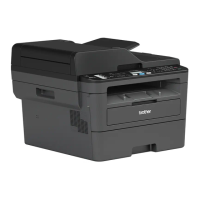
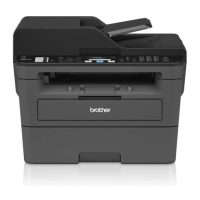
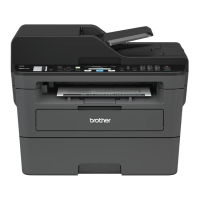
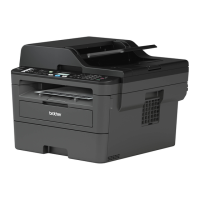
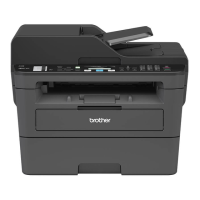


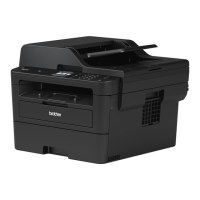




